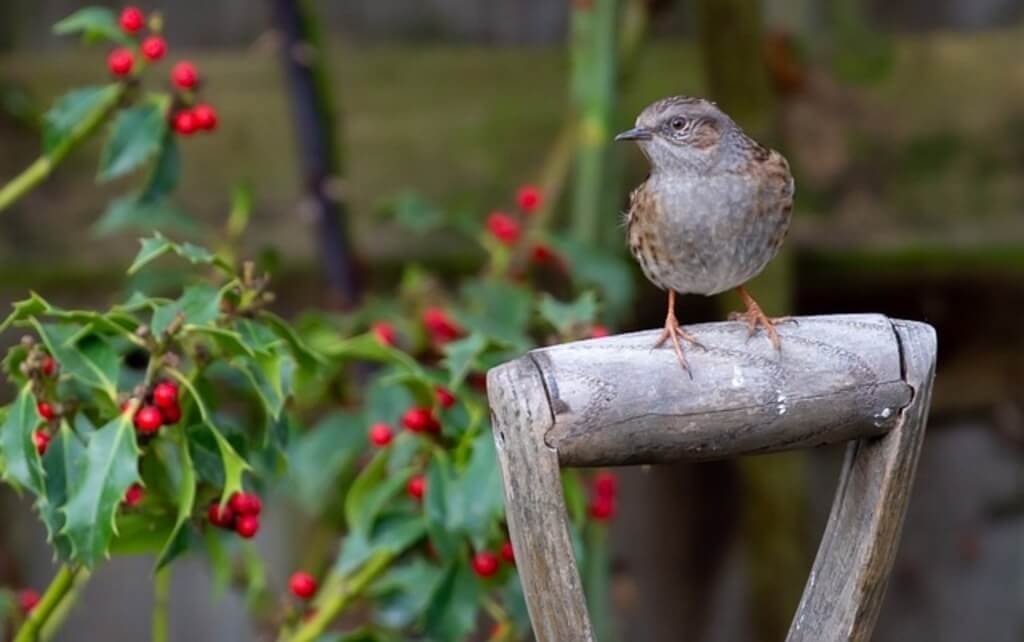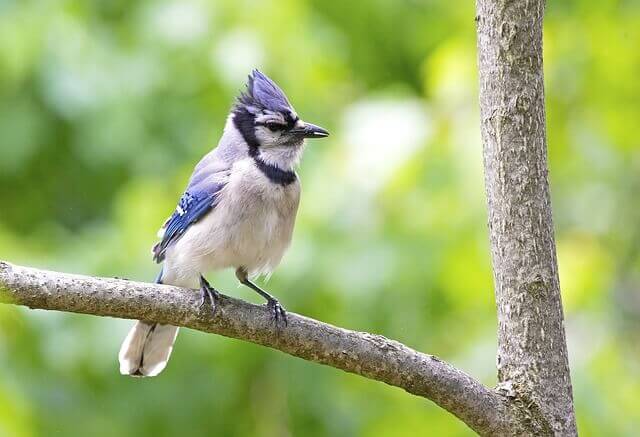Welcome to the enchanting world of “Birds That Eat Holly Berries.” In this exploration, we’ll delve into the fascinating relationship between various avian species and the vibrant, red jewels of the winter landscape – holly berries.
These resilient birds have evolved to savor these seasonal treats, not only for their own sustenance but also for the ecological role they play in maintaining biodiversity.
Join us on this journey as we uncover the secrets of these feathered berry enthusiasts and the enchanting ways in which they embrace the winter season.
Table of Contents
Backyard Birds That Eat Holly Berries
American Robin
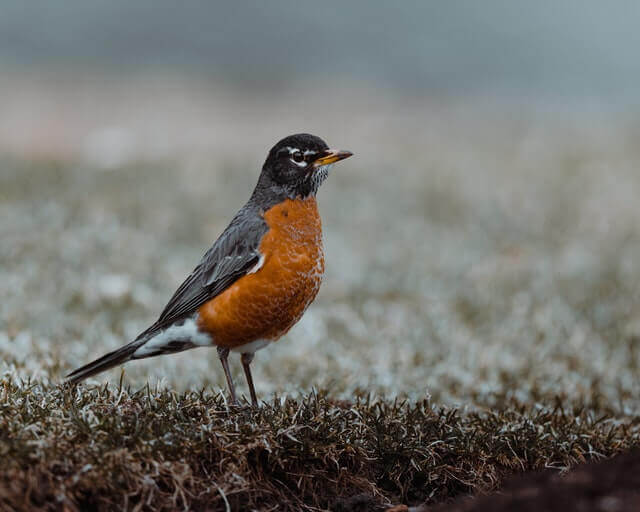
The American Robin, or Turdus migratorius, is a widely distributed bird found throughout North America, ranging from Alaska and northern Canada to Mexico. These adaptable birds thrive in various habitats, from woodlands to urban areas.
During the warmer months, their diet primarily consists of insects and invertebrates. However, in winter, when insects are scarce, they turn to fruits and berries, including the vibrant holly berries.
This dietary shift not only sustains them during the cold season but also aids in holly plant seed dispersal, contributing to the plant’s propagation in diverse ecosystems.
While some American Robins migrate south for the winter, many remain in their breeding range, making them a cherished sight as they enjoy holly berries amid the winter landscape.
European Robin
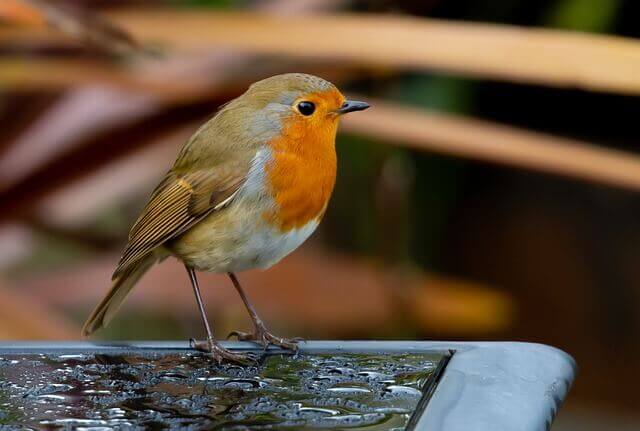
The European Robin (Erithacus rubecula), often simply called the Robin, is a small, widespread bird species found across Europe, with some populations extending into Western Asia and North Africa. These charming birds inhabit diverse environments, including woodlands, gardens, parks, and urban areas.
While primarily insectivorous during the breeding season, they adapt their diet in winter to include various foods like fruits, berries, and even scraps.
Holly berries, with their bright red hue and energy-rich content, play a vital role in their winter diet, providing sustenance and hydration.
European Robins are known for their territorial behavior and can be non-migratory or migrate short distances, making them a beloved and resilient presence in European landscapes during the colder months.
Cedar Waxwing
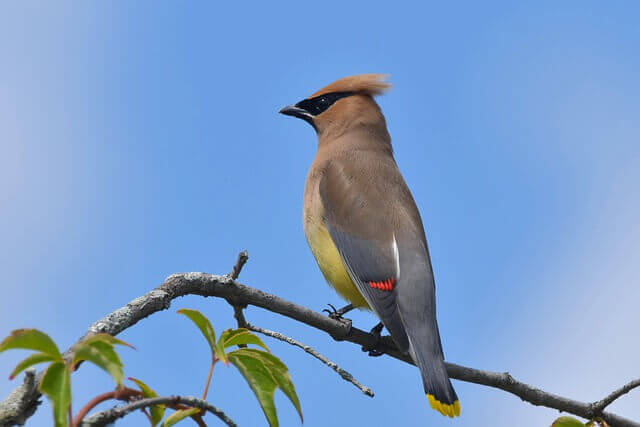
The Cedar Waxwing (Bombycilla cedrorum) is a charismatic bird species found primarily in North America. They inhabit a variety of habitats, including woodlands, open forests, and urban areas, and are known for their sleek appearance and distinctive crested head feathers.
Cedar Waxwings have a flexible diet that varies with the seasons; during spring and summer, they primarily feed on insects, but as winter arrives and insects become scarce, they turn to fruits and berries.
Holly berries are among their favorites, as the birds are drawn to the bright red berries, which provide essential energy and hydration during the cold season.
These sociable birds often travel in flocks and are known for their migratory behavior, moving southward in search of food during the winter. Cedar Waxwings are beloved for their elegant presence and their role in dispersing seeds, including those of holly plants, throughout North American ecosystems.
Eastern Bluebird
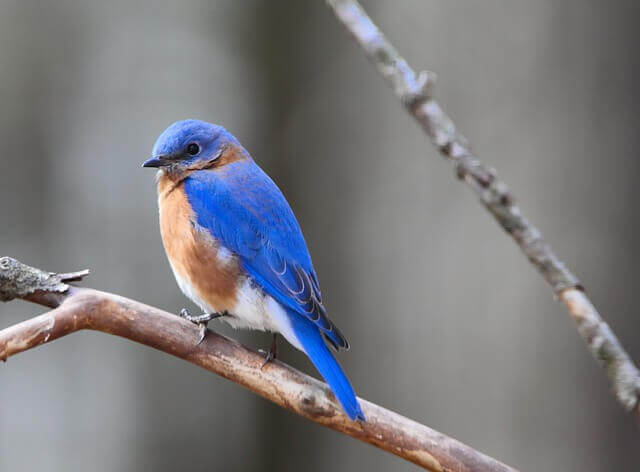
The Eastern Bluebird (Sialia sialis) is a small, vibrant bird species native to eastern North America. They are typically found from southern Canada to the Gulf of Mexico, with habitats spanning open woodlands, meadows, and pastures.
Eastern Bluebirds are insectivorous during the breeding season, primarily preying on insects like beetles and caterpillars. However, as winter approaches and insects become scarce, they adapt their diet to include berries and fruits, including holly berries.
Their consumption of holly berries serves as an essential winter food source, providing energy and sustenance.
While some Eastern Bluebirds migrate to warmer regions, many remain in their breeding range or undertake short-distance migrations, making them a cherished sight amidst the winter landscape, where they indulge in the bright red treasures of holly bushes.
Gray Catbird
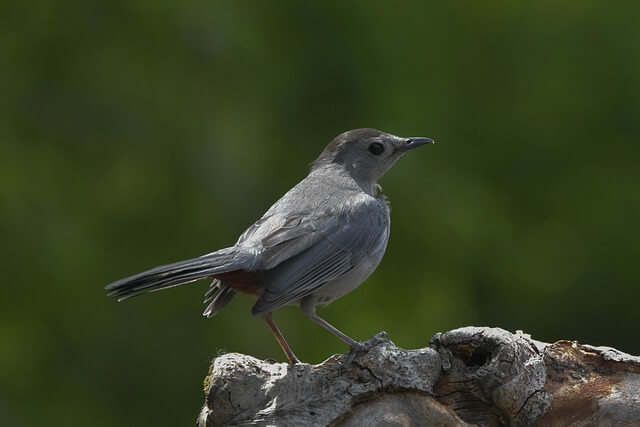
The Gray Catbird (Dumetella carolinensis) is a bird species native to North America, particularly found in the eastern and central parts of the continent. These birds are known for their preference for shrubby habitats, such as thickets, gardens, and dense undergrowth near water sources.
Their diet primarily consists of insects, including beetles and caterpillars, during the breeding season. However, in late summer and early fall, they shift to consuming a variety of fruits, including holly berries.
Gray Catbirds are known for their mewing or “cat-like” calls, which are a prominent feature of their behavior.
While they are generally migratory, some populations in the southern parts of their range may be year-round residents. Their reliance on holly berries during fall highlights their importance in the dispersal of these fruits within their habitats.
Common Blackbird
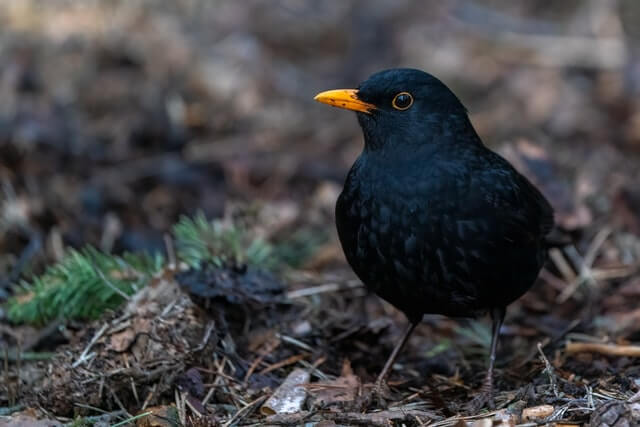
The Common Blackbird (Turdus merula) is a widespread bird species found throughout Europe, including parts of western Asia and North Africa. These adaptable birds thrive in various habitats, including woodlands, gardens, and urban areas.
During the breeding season, their diet primarily consists of insects and invertebrates, but as winter arrives and insect populations decline, they shift their diet to include fruits and berries.
Holly berries, with their vibrant red hue and nutritious content, become an essential part of their winter diet, providing energy and sustenance.
While some Common Blackbirds are sedentary, many northern populations migrate southward during the colder months, making these birds a common and cherished sight in European landscapes, especially as they forage on holly berries amidst the winter foliage.
Hermit Thrush
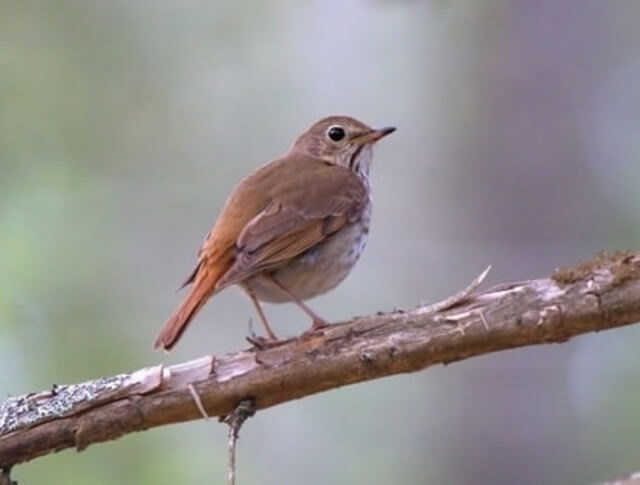
The Hermit Thrush (Catharus guttatus) is a bird species found in North America, with a range extending from Alaska and Canada into parts of Mexico. These birds typically inhabit moist woodlands, forests, and undergrowth, favoring areas with ample cover and water sources.
Hermit Thrushes are primarily insectivorous during the breeding season, feasting on insects, spiders, and other invertebrates. As winter arrives and insects become scarce, they adjust their diet to include various fruits and berries, including holly berries.
While their primary breeding range covers parts of North America, some Hermit Thrushes undertake migratory journeys, often moving south for the winter.
This adaptable and migratory behavior makes them an intriguing component of North America’s avian diversity, occasionally gracing us with their presence in winter gardens as they partake in holly berry consumption.
Mistle Thrush
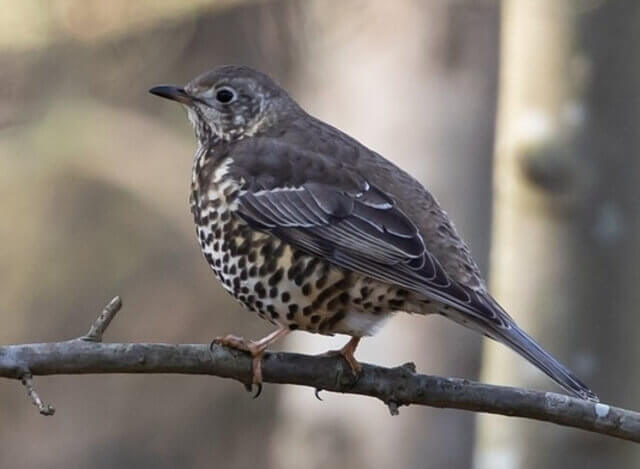
The Mistle Thrush (Turdus viscivorus), a bird species native to Europe, is recognized for its strong, melodious song and distinctive appearance. These adaptable birds inhabit a variety of environments, including woodlands, parks, and gardens.
During the breeding season, they primarily feed on insects, earthworms, and other invertebrates. However, as winter sets in and insects become scarcer, Mistle Thrushes shift their diet to include berries, particularly mistletoe berries, from which they derive their name.
Holly berries, with their vibrant red color and high sugar content, also become part of their winter diet.
While some Mistle Thrushes are migratory, others are residents in their breeding range, and their fondness for holly berries during the colder months contributes to the distribution of these plants in various ecosystems, highlighting their ecological significance.
Fieldfare
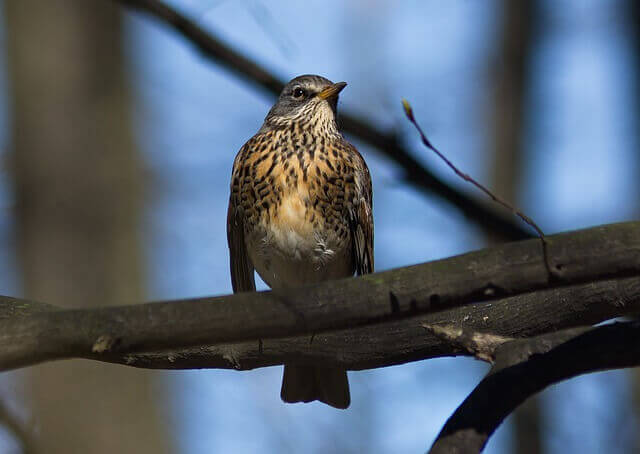
The Fieldfare (Turdus pilaris) is a migratory bird species found primarily in Europe and Asia. They are commonly seen in various habitats, including woodlands, farmlands, and open fields. Fieldfares are omnivorous, predominantly feasting on insects, earthworms, and fruits during the summer months.
However, as winter approaches and their breeding grounds become colder, they undertake extensive migrations, with many individuals flying to the milder climates of western Europe.
During this period, they rely heavily on a diet of berries, including holly berries, which offer essential energy and hydration.
Their wintering behavior is characterized by large flocks, making them a striking sight in European landscapes as they indulge in holly berry feasts amidst the winter scenery.
Redwing
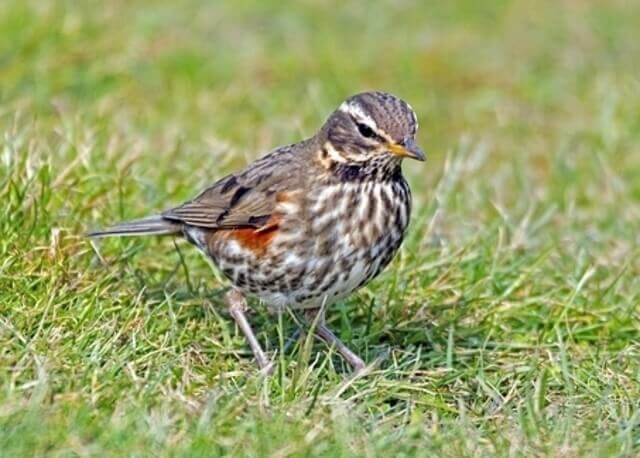
The Redwing (Turdus iliacus) is a migratory songbird found across parts of Europe and Asia. These birds favor a range of habitats, from woodlands and marshes to gardens and urban areas. During the breeding season, their diet primarily consists of insects and earthworms.
However, as winter approaches, they migrate southward, often in large flocks, to escape harsh weather conditions. In their wintering grounds, Redwings shift their diet to include fruits, particularly berries, as they provide a reliable source of energy.
Holly berries, with their rich red color and nutritional value, are among the preferred winter foods for Redwings. These birds play a significant role in seed dispersal while enjoying the holly berry bounty, contributing to the plant’s propagation across diverse landscapes.
Northern Mockingbird

The Northern Mockingbird (Mimus polyglottos) is a versatile bird species found across North America, from southern Canada to Mexico. These adaptable birds thrive in a variety of habitats, including woodlands, open fields, gardens, and urban areas.
Known for their remarkable ability to mimic other bird songs and sounds, Northern Mockingbirds are primarily insectivorous during the breeding season, feasting on insects, spiders, and small fruits.
In the colder months, they expand their diet to include berries, including holly berries, which provide a valuable source of energy.
While they can be non-migratory in some regions, Northern Mockingbirds may migrate short distances, particularly in the northern parts of their range.
Their remarkable vocal talents and dietary flexibility make them a charismatic presence in North American landscapes, even during the winter when holly berries are in abundance.
Northern Cardinal

The Northern Cardinal (Cardinalis cardinalis) is a well-known bird species native to North America. These striking birds, with their brilliant red plumage and distinctive crest, are a common sight from the eastern United States to the southern parts of Canada and Mexico.
Cardinals are adaptable birds, often found in a range of habitats, including woodlands, gardens, and suburban areas. Their diet primarily consists of seeds, insects, and fruits. While they are not migratory in the traditional sense, they may move to lower elevations during the winter to find food more easily.
Holly berries are occasionally included in their diet during the winter months, providing both nourishment and a pop of color to their winter foraging repertoire. Cardinals’ vibrant presence and unique behaviors make them a cherished part of North American avian life throughout the year.
Blue Jay
The Blue Jay (Cyanocitta cristata) is a striking and widely recognized bird species found primarily in eastern and central North America. These adaptable birds inhabit diverse environments, including deciduous and mixed forests, urban areas, and parks.
Their diet is versatile and includes a wide range of foods such as nuts, seeds, insects, small vertebrates, and even human-provided scraps. While they are not exclusively migratory, some Blue Jays undertake short-distance migrations, primarily in response to fluctuations in food availability.
During the winter months, they often turn to fruits and berries for sustenance, including holly berries. Blue Jays’ preference for holly berries contributes to the dispersal of holly plant seeds, making them important ecological agents while adding a touch of color to winter landscapes with their distinctive blue plumage.
Conservation and Ecological Impact A Win-Win for Birds
The interplay between birds and holly berries is not merely a matter of dietary preference; it holds profound ecological significance. Here’s why:
- Seed Dispersal Dynamics: When birds feast on holly berries, they unwittingly become agents of seed dispersal. After digestion, they excrete the seeds in different locations, often far from the parent plant. This dispersal mechanism is critical for holly plants’ survival and expansion, ensuring genetic diversity and bolstering their presence in various ecosystems.
- Promoting Biodiversity: Holly plants, with their vibrant berries, serve as a vital source of nourishment for a variety of bird species during the winter months. This in turn sustains the bird populations, enhancing biodiversity within the ecosystem. A diverse bird population contributes to balanced predator-prey relationships and the overall health of the environment.
- Ecosystem Resilience: By participating in this ecological cycle, holly plants are better equipped to withstand environmental challenges. The dispersal of their seeds to different locations enhances their adaptability and resilience in the face of changing conditions.
- Winter Survival: For many birds, especially those that do not migrate or have limited migration patterns, holly berries are a lifeline during the winter when other food sources become scarce. Access to these energy-rich berries helps them maintain body temperature, conserve energy, and survive the cold season.
In summary, the relationship between birds and holly berries exemplifies the intricate web of life within ecosystems. It’s a harmonious coexistence where birds benefit from a winter food source, while holly plants gain an effective means of seed dispersal. This mutual dependence underscores the beauty and resilience of nature and highlights the importance of preserving habitats that support these interactions.
Tips for Attracting Birds: Creating a Bird-Friendly Habitat
- Plant Native Holly Species: To entice birds that enjoy holly berries, consider planting native holly species in your garden. Native plants are adapted to the local environment and are more likely to attract local bird species.
- Provide a Variety of Berry-Bearing Plants: While holly berries are a favorite among many bird species, diversity in your garden is key. Include other berry-bearing plants such as dogwoods, elderberries, and serviceberries to offer a buffet of options throughout the year.
- Offer Shelter and Nesting Sites: Birds need safe places to rest, hide from predators, and build nests. Provide birdhouses, shrubs, and trees for shelter and nesting opportunities.
- Maintain a Water Source: Birds need a consistent source of fresh water for drinking and bathing. Install a birdbath or shallow dish with clean water to attract more avian visitors.
- Limit Pesticide Use: Minimize the use of pesticides in your garden, as they can harm both insects (bird food) and birds directly. Embrace natural pest control methods to maintain a balanced ecosystem.
- Install Bird Feeders: Supplement natural food sources with bird feeders filled with seeds, suet, and mealworms. Different bird species have varied dietary preferences, so offer a variety of foods to attract a diverse avian population.
- Seasonal Planting: Plan your garden to provide food and shelter year-round. Choose plants that bloom and fruit at different times, ensuring a continuous supply of resources for birds.
- Keep Feeders Clean: Regularly clean and sanitize your bird feeders and birdbaths to prevent the spread of disease among visiting birds.
- Practice Patience: Attracting birds to your garden may take time. Be patient and consistent with your efforts, and you’ll gradually see more feathered friends visiting.
- Observe Quietly: When birds do come to your garden, observe them from a distance and avoid sudden movements or loud noises. This will help them feel safe and comfortable in their new habitat.
By implementing these tips and creating a bird-friendly environment, you can not only attract a variety of bird species but also contribute to their well-being and the overall biodiversity of your garden. Happy birdwatching!
Additional Resources: Explore Bird-Holly Berry Connections Further
- Field Guides: Bird field guides specific to your region can provide valuable information about local bird species, their behaviors, and dietary preferences. Consider guides like the “Sibley Field Guide to Birds of Eastern North America” or “Collins Bird Guide” for European bird enthusiasts.
- Birding Apps: Download birding apps such as Merlin Bird ID or Audubon Bird Guide for easy access to bird identification, calls, and habits.
- Online Birding Communities: Websites like eBird and iNaturalist allow you to contribute to citizen science projects by reporting bird sightings and interactions with holly berries. You can also connect with other bird enthusiasts for insights and discussions.
- Books: Explore books like “Birds of North America” by Kenn Kaufman or “Birds of Europe” by Lars Svensson for comprehensive information on bird species and their behaviors.
- Conservation Organizations: Visit the websites of bird conservation organizations such as the National Audubon Society (USA) or the Royal Society for the Protection of Birds (UK) for resources on bird-friendly gardening practices, habitat conservation, and more.
- Local Birding Clubs: Join local birding clubs or organizations to connect with experienced birdwatchers in your area. They often host events, workshops, and field trips focused on bird observation and conservation.
- Wildlife Gardening Guides: Books and online resources dedicated to wildlife gardening can provide practical tips on creating bird-friendly habitats in your own backyard.
- University Extensions: Check your local university extension service for gardening guides and resources specific to your region, including recommendations for native plants that attract birds.
- Bird Research Journals: Explore scientific journals like “The Auk” or “Ibis” for in-depth studies on bird ecology, behavior, and interactions with plant species like holly.
- Online Forums: Participate in online birdwatching forums and communities where enthusiasts share their experiences, photographs, and insights into attracting birds to gardens and holly berries.
These resources offer a wealth of information for bird enthusiasts, gardeners, and nature lovers interested in learning more about the fascinating connections between birds and holly berries. Whether you’re a novice or an experienced birder, there’s always something new to discover in the world of avian ecology.
Conclusion
In the realm of birds and holly berries, we’ve uncovered a captivating story of coexistence. From American Robins to European Robins and beyond, these birds find sustenance in holly berries during winter. Yet, their connection transcends appetite; it’s a delicate dance in nature’s grand ballet.
As birds feast on holly berries, they unwittingly sow the seeds of holly plants, nurturing biodiversity. This harmonious cycle illustrates the intricate balance of our natural world. By fostering bird-friendly habitats and appreciating these connections, we celebrate the wonders of nature and ensure a brighter future for both birds and holly plants.

